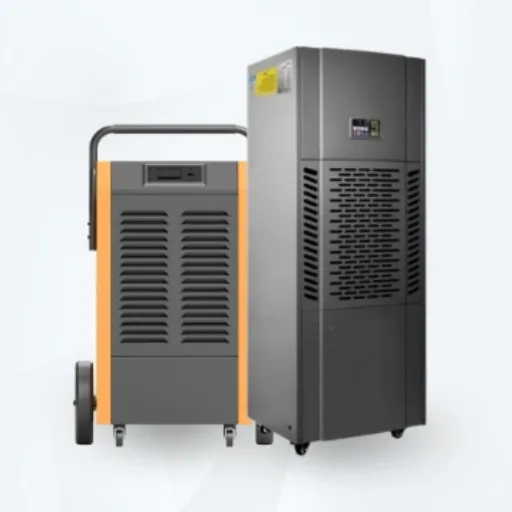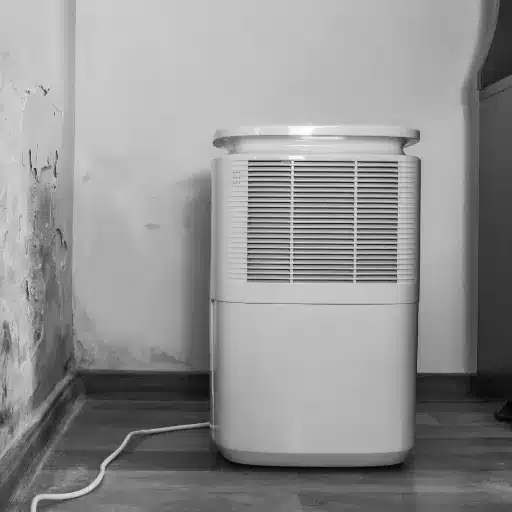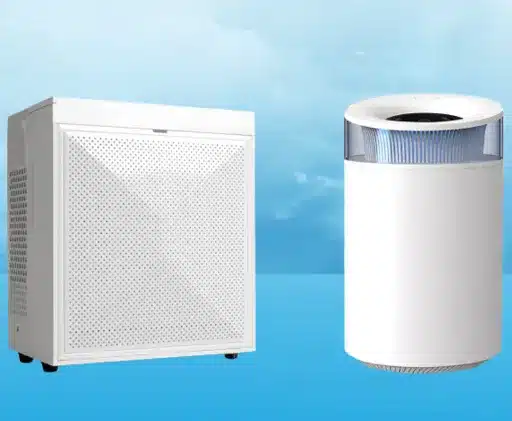As with most humid regions, maintaining the ideal level of indoor relative humidity should be a necessity for comfort and health. However, if the relative indoor humidity is high, it can lead to the development of mold, must odor, and damage to household property. To mitigate such moisture issues, dehumidifiers serve as a powerful instrument to control humidity and protect property.
With this guide, we want to make the best purchasing decision as simple as possible by featuring the best-reviewed dehumidifiers and how they operate. Furthermore, our comprehensive guide analyzes the workings of dehumidifiers, perks to having the right level of humidity in one’s space, and show the best products available on the market today. This guide serves individuals that face issues with excessive seasonal humidity, moisture in basements, or any other type of dampness around the house.
What is a dehumidifier and how does it work?
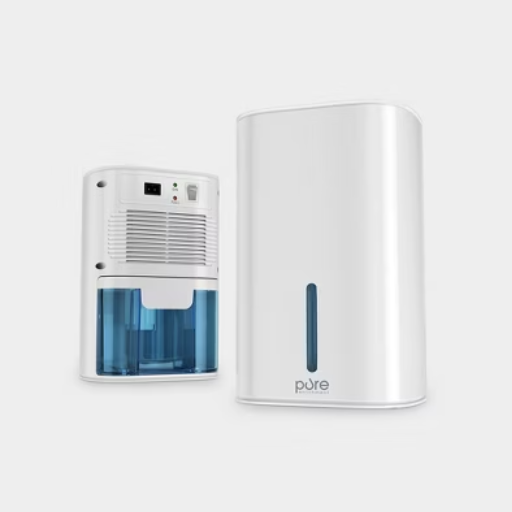
A dehumidifier is a household appliance designed to reduce and regulate the level of humidity in the air, creating a more comfortable and healthier living environment. It works by drawing in moist air through a fan and passing it over refrigerated coils, which cool the air and condense the moisture into water droplets. The collected water is then stored in a tank or drained away, while the dry air is reheated and released back into the room. This process helps prevent mold, mildew, and allergens caused by excess humidity, improving indoor air quality.
Understanding the basics of dehumidification
A dehumidifier offers numerous advantages for maintaining a healthy and comfortable indoor environment. By reducing excess moisture, it helps control allergen triggers such as dust mites and mold spores, which thrive in humid conditions. This can significantly improve air quality and reduce respiratory issues for occupants. Additionally, dehumidifiers protect your home’s infrastructure and belongings, preventing problems like peeling paint, warping wood, and rusting metal. They also aid in drying laundry indoors and can make cooling systems more efficient by lowering the burden of humid air. Overall, using a dehumidifier contributes to a safer, cleaner, and more energy-efficient living space.
How dehumidifiers remove moisture from the air
Dehumidifiers function by removing moisture from the air using a simple procedure. To commence the process, an air fan circulates moist air into the device. The moist air is passed over a set of cold coils. This cools the air and causes the moisture to condense into water droplets. The moisture can be either collected in a tank, poured out through a drain hose, or pumped out of the device. Once the dew point has been reached, a dehumidifier removes the moisture from the air by reheating the air. The dehumidifier then releases the air into the room. This cycle continues until the desired humidity level is reached, ensuring a comfortable climate indoors.
Types of dehumidifiers available at Target
Target offers a variety of dehumidifiers catering to different needs and preferences. Some of the most popular types include:
Portable Dehumidifiers – These versatile units are ideal for small to medium rooms. They are easy to move around and often come with features like adjustable humidity settings, auto-shutoff, and washable filters. Portable dehumidifiers are perfect for bedrooms, bathrooms, or home offices.
Whole-House Dehumidifiers – Designed to control humidity across an entire home, these powerful appliances integrate with HVAC systems or work independently. They are suitable for spaces with consistent high humidity levels and can help improve overall air quality.
Mini Dehumidifiers – Compact and efficient, mini dehumidifiers are suitable for tight spaces like closets, pantries, or small bathrooms. They are energy-efficient and typically use thermoelectric technology, making them quiet and convenient for discrete areas.
Basement and Large-Capacity Dehumidifiers – These units are designed for basement use or other high-humidity areas, with larger water tanks and higher moisture extraction rates. Many models include continuous drainage options for hassle-free operation.
With these options, Target provides solutions for controlling moisture in various environments, helping customers create healthier and more comfortable living spaces.
How to choose the right dehumidifier for your home?
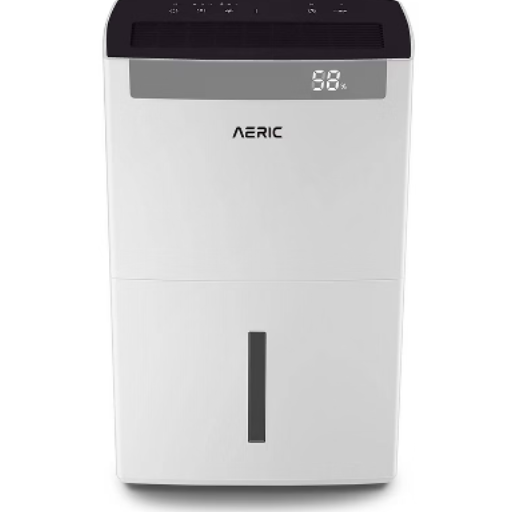
When choosing the right dehumidifier for your home, consider the following factors:
Room Size – Measure the area you need to dehumidify and select a unit with the appropriate capacity, typically measured in pints per day. Larger spaces might require high-capacity models.
Humidity Levels – For very damp areas, such as basements, opt for a dehumidifier with a higher moisture removal rate.
Features – Look for useful features like adjustable humidistats, automatic shut-off, continuous drainage, or energy efficiency ratings to suit your needs.
Placement – Choose a portable model for versatility or a stationary unit for high-humidity areas where mobility isn’t required.
Budget – Determine your price range and balance the cost with essential features and performance.
By focusing on these considerations, you can find a dehumidifier that effectively meets your home’s unique requirements.
Determining the appropriate pint capacity
The choice of pint capacity for your dehumidifier is based on the space that needs dehumidifying along with the humidity level. A dehumidifier with 20 to 30 pint capacity is sufficient for moderately damp areas like bedrooms or offices that are up to 500 square feet. For larger areas, like basements or other rooms that are up to 1,500 square feet, use units with 40 to 50 pint capacities. In extremely damp conditions, or in spaces greater than 2,500 square feet, high-capacity units of 70 pints or more are preferred. Furthermore, consider the environment like the climate and how many people or sources of moisture are found in the space. For best results in your home or workplace, follow the recommendations from the manufacturers alongside standard sizing charts.
Considering energy efficiency and running costs
When selecting a dehumidifier, energy efficiency plays a crucial role in controlling long-term running costs. Look for models with an Energy Star certification, as these units consume less electricity while maintaining effective performance. High-capacity units often use more energy, but efficiency ratings can help offset operational costs. Additionally, consider the unit’s wattage and daily operating hours to estimate electricity usage, as well as features like a humidistat or timer to minimize unnecessary power consumption. Regular maintenance, such as cleaning filters and coils, further ensures efficient operation and prevents energy waste. By balancing capacity needs with efficiency standards, you can maintain a comfortable environment without excessively increasing energy expenses.
Features to look for in a reliable dehumidifier
When selecting a dehumidifier, the following features can help ensure you choose a reliable and effective device:
Capacity and Coverage Area
Choose a dehumidifier with the appropriate capacity for the size of your space, measured in pints of moisture removed per day. Smaller units work well for bedrooms or small rooms, while larger models are ideal for basements or humid areas.
Energy Efficiency
Look for dehumidifiers certified by Energy Star to ensure energy-efficient operation, reducing your power consumption without sacrificing performance.
Automatic Humidistat and Controls
Built-in humidistats allow the device to measure and adjust humidity levels automatically, maintaining your preferred settings without constant manual adjustments.
Drainage Options
A reliable dehumidifier should offer multiple drainage options, such as a removable tank or continuous drainage through a hose connection—ideal for those seeking low-maintenance operation.
Noise Levels
For units intended for living spaces, prioritize models with quieter operation, especially for bedrooms or offices.
Portability and Design
Lightweight, compact designs with caster wheels or handles allow for easy movement between rooms and convenient placement in different areas.
Additional Features
Extras like auto-restart (in case of power outages), defrost functionality, air filters, or timers enhance usability and functionality, catering to varying needs.
By focusing on these features, you can find a dehumidifier that aligns with your requirements, ensuring optimal humidity control and comfort in your space.
What are the best dehumidifiers for different room sizes?
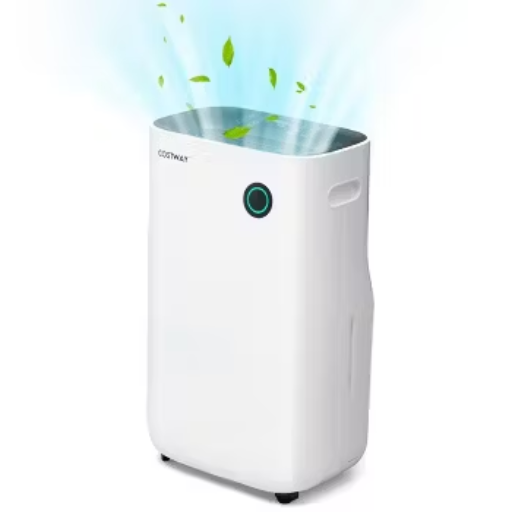
Small Rooms (up to 300 sq. ft.)
For smaller spaces, compact and energy-efficient dehumidifiers with a 20-30 pint capacity are ideal. Models like the hOmeLabs Small Dehumidifier offer quiet operation and portability perfect for bedrooms or bathrooms.
Medium Rooms (300-600 sq. ft.)
Medium-sized rooms benefit from dehumidifiers with a 30-50 pint capacity. The Frigidaire 50-Pint Dehumidifier provides excellent moisture removal while offering features such as continuous drain options and air filtration.
Large Rooms (600-1,000 sq. ft.)
Larger rooms require dehumidifiers with a 50-70 pint capacity for optimal performance. The Vremi 50 Pint Dehumidifier is a reliable option for living rooms or basements, combining power and energy efficiency.
Very Large Spaces (1,000+ sq. ft.)
For expansive areas, high-capacity models over 70 pints, like the Aprilaire Basement Pro Dehumidifier, are recommended. These devices handle extensive moisture removal for basements, workshops, or even whole-house coverage.
By selecting the right dehumidifier sized for your specific room, you can ensure efficient and effective humidity control.
Top picks for small spaces and bedrooms
When it comes to controlling humidity in small areas like bedrooms, offices, or bathrooms, compact yet powerful dehumidifiers are the ideal choice. Here are the top recommendations:
Pro Breeze Electric Mini Dehumidifier
This lightweight, portable option is highly effective for spaces up to 250 sq. ft. It features ultra-quiet operation, making it perfect for bedrooms, and an auto shut-off function for safety and ease of use.
Frigidaire FFAD2233W1 Dehumidifier
Designed for rooms up to 300 sq. ft., this model efficiently removes excess moisture while maintaining quiet operation. It includes a washable filter to capture dust and allergens, enhancing air quality, and a sleek design that fits seamlessly into modern spaces.
hOmeLabs Small Dehumidifier
With a capacity suitable for rooms up to 150 sq. ft., this energy-efficient unit is compact yet powerful. Its one-button operation and thermoelectric cooling make it user-friendly and ideal for small, quiet spaces.
These dehumidifiers not only combat excessive moisture but also enhance indoor air quality, making them excellent choices for improving comfort in smaller living areas.
Recommended dehumidifiers for basements and large areas
hOmeLabs 4,500 Sq. Ft Energy Star Dehumidifier
Designed for extensive areas like basements, this dehumidifier can remove up to 50 pints of moisture per day. It features a modern, sleek design, user-friendly touch controls, and customizable humidity settings. The built-in pump option allows hassle-free water drainage, making it a robust choice for large spaces.
Frigidaire High-Efficiency Dehumidifier (50-Pint)
Offering durability and efficiency, this unit works in spaces up to 4,500 sq. ft. Its standout features include a washable filter for improved air quality and continuous drain functionality for long-term use. Its portability, thanks to easy-roll casters and side handles, enhances convenience.
Midea Cube 4,500 Sq. Ft. Dehumidifier
Known for its innovative design, the Midea Cube provides high moisture removal capacity with a compact footprint. It’s equipped with smart controls through a mobile app, adjustable water tank capacity, and a reliable pump for flexibility in draining. Ideal for larger and more humid spaces, it’s both versatile and efficient.
These dehumidifiers are practical and efficient solutions for managing moisture in basements and large areas. They not only help maintain structural integrity by preventing mold and dampness but also contribute to healthier air quality and enhanced overall comfort.
Whole house dehumidification solutions
Whole house dehumidification systems are an excellent option for maintaining consistent humidity levels throughout an entire home. These systems are typically integrated with your HVAC system, allowing them to manage moisture effectively across all rooms. They work by drawing in moist air, removing excess moisture through condensation, and then circulating the drier air back into your home. Unlike portable units, whole house dehumidifiers are designed to handle larger spaces efficiently and offer adjustable settings based on the desired humidity level.
When selecting a whole house dehumidification solution, consider factors such as capacity (measured in pints per day), energy efficiency, and compatibility with your existing HVAC system. Many models feature smart controls and advanced filtration to enhance performance and improve air quality. Additionally, maintenance requirements, such as cleaning filters and draining water, are essential to ensure long-term effectiveness.
Ultimately, whole house dehumidifiers help protect your home’s structure by preventing mold, mildew, and condensation buildup, while also creating a more comfortable and healthier living environment. Investing in the right system tailored to your home’s specific needs can significantly improve overall air quality and reduce the risks associated with excess moisture.
How to set and maintain the ideal indoor humidity level?
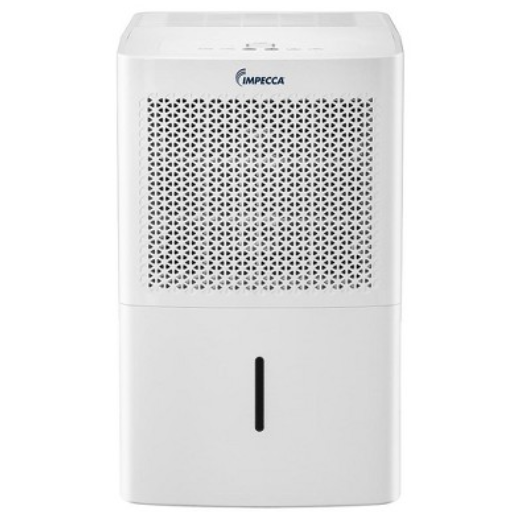
An indoor humidity level between 30% and 50% is optimal to avoid issues such as mold growth or dry air discomfort. Use a hygrometer to monitor humidity levels regularly. You can adjust your home’s humidity using whole house dehumidifiers, portable dehumidifiers, or humidifiers based on the season and weather. Ensure adequate air circulation in high moisture areas such as bathrooms and kitchens to reduce humidity levels and repair leaks immediately. Routine maintenance of your dehumidifier or HVAC system is necessary for strict control of moisture indoors.
Understanding relative humidity and target humidity
A specific measurement of relative humidity defines the vapor content in the air relative to the saturation level at a specified temperature. For instance, if the relative humidity is 50%, it means that at the temperature the air is currently at, it can hold twice as much water vapor as it is currently holding. Usually, sustaining the relative room humidity levels within a specific limit should be maintained for comfort, health, and even for the structural soundness of the house.
Most experts agree that the ideal indoor relative humidity ranges from 30-50 percent, depending on the season. The winter months should have humidity levels around 30-40% to reduce condensation on windows and mold spores. Conversely, warmer months should have humidity levels lower than 50% to prevent dust mites and fungi. Achieving the desired comfort levels is commonly done through the use of air conditioners, dehumidifiers, humidifiers, and ventilation systems.
Tips for effective humidity control in various seasons
Winter
To reduce humidity in colder months and minimize condensation, use a dehumidifier or run exhaust fans in areas like bathrooms and kitchens. Lowering your thermostat slightly can also prevent the air from becoming too moist. Ensure proper ventilation and seal air leaks around doors and windows to avoid cold air intrusion, which can lead to condensation.
Summer
During warmer months, use air conditioning to regulate indoor temperature and humidity. Ceiling fans or portable fans can improve air circulation, preventing excess moisture buildup. Additionally, keep windows and doors closed during high humidity periods and place a dehumidifier in problem areas to absorb excess moisture effectively.
Rainy Season
High humidity during rainy seasons can lead to mold growth. To combat this, open windows during dry spells to allow fresh air circulation and clean ventilation systems regularly. Use moisture-absorbing materials like silica gel or charcoal in small, enclosed spaces to reduce dampness.
General Tips
Invest in humidity-regulating houseplants, such as peace lilies or ferns, which can absorb excess moisture. Regularly clean and maintain HVAC systems to ensure optimal performance. Monitoring indoor humidity with a hygrometer can help adjust your strategies as needed to maintain ideal levels year-round.
Balancing dehumidification with air conditioning
Air conditioning systems naturally contribute to dehumidification as they cool the air, which can help reduce indoor humidity. However, over-relying on air conditioning to dehumidify may lead to higher energy costs and uneven moisture control. To achieve a balance, consider these strategies:
Optimize Your AC Settings
Set your air conditioner to a steady, moderate temperature to avoid excessive cooling, which can lead to discomfort or high energy bills. Use the “dry mode” setting if your AC unit has one, as it focuses on dehumidifying without drastically reducing the temperature.
Supplement with a Dehumidifier
For areas with persistent humidity, a dedicated dehumidifier can efficiently handle excess moisture. Position it in problem zones, such as basements or bathrooms, to complement your AC without overburdening it.
Maintain Equipment Regularly
Cleaning air filters and inspecting your AC unit for proper drainage are essential for keeping systems running efficiently. Blockages or dirty filters can impact both cooling and dehumidification performance.
By leveraging the synergy between air conditioning and supplemental tools like dehumidifiers, you can maintain a comfortable indoor environment while preventing issues related to excess humidity.
What are the benefits of using a dehumidifier?
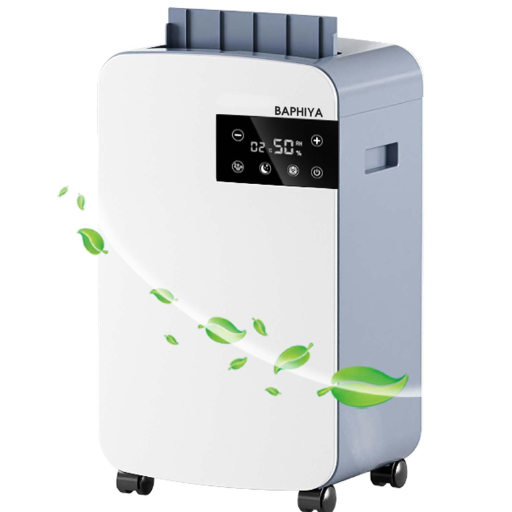
Using a dehumidifier offers numerous benefits for both health and home maintenance. By reducing excess moisture in the air, it helps prevent the growth of mold and mildew, which can lead to respiratory issues and allergies. A controlled humidity level also protects furniture, walls, and electronics from damage caused by dampness. Additionally, dehumidifiers can enhance indoor air quality and make your living environment feel more comfortable, especially during humid seasons.
Improving air quality and reducing allergens
To improve the quality of air and manage allergens in the home, it is essential to keep cleaning indoors, and also manage the source of pollutants. To start, make sure that air is cycled properly by using exhaust fans or opening windows so that fresh air comes in. Remove dust and common allergens, such as pet dander and pollen, from floors, carpets, and surfaces. These should be done regularly. The installation of air purifiers or HVAC systems with high-efficiency particulate air (HEPA) filters can significantly reduce airborne allergens and pollutants. Moreover, using dehumidifiers controls humidity and decreases mold and dust mite growth. In addition, try not to use potent chemical cleaning agents or aerosol propellants as they may emit harmful volatile organic compounds (VOCs) into the air. With these practices, indoor air quality can greatly improve which makes the environment healthier.
Preventing mold and mildew growth
Preventing mold and mildew requires a proactive approach to control moisture and maintain cleanliness. Start by identifying and addressing sources of excess moisture, such as leaky roofs, pipes, or windows. Ensure proper ventilation in areas prone to humidity, like bathrooms, kitchens, and basements, by using exhaust fans or opening windows. Dehumidifiers can help maintain indoor humidity levels below 50%, reducing the chance of mold growth. Clean and dry wet areas promptly—mold can develop within 24-48 hours on damp surfaces. Regularly clean and inspect areas susceptible to mold, such as shower curtains, walls, and carpets, using mold-inhibiting cleaning solutions. Additionally, ensure gutters and downspouts are functioning correctly to direct water away from your home. By combining these strategies, you can effectively minimize the risk of mold and mildew, ensuring a healthier indoor environment.
Enhancing comfort and energy efficiency in your home
To improve comfort and energy efficiency in your home, focus on optimizing insulation, ventilation, and energy-efficient systems. Start by ensuring your home is well-insulated, particularly in the attic, walls, and around windows and doors, to minimize heat loss or gain. Switching to energy-efficient heating and cooling systems, such as a high-efficiency HVAC unit or a programmable thermostat, can significantly reduce energy consumption while maintaining a comfortable temperature. Additionally, sealing gaps and cracks around your home prevents drafts, enhancing both warmth in the winter and a cooler environment during summer.
Upgrade to energy-efficient windows with low-emissivity (Low-E) coatings to reduce heat transfer and improve indoor comfort. Energy-saving solutions like LED lighting and ENERGY STAR-certified appliances will lower electricity use while being kinder to the environment. Incorporating smart home technology, such as automated lighting and temperature controls, enables more precise energy management. Lastly, proper ventilation with exhaust fans or air exchangers ensures better air quality and reduces humidity, further enhancing indoor comfort and reducing energy waste.
How to properly use and maintain your dehumidifier?
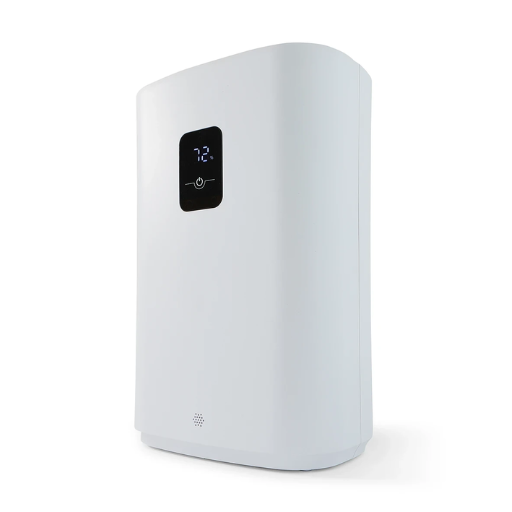
To use your dehumidifier effectively, start by placing it in a central location with good airflow and ensure all doors and windows are closed to maximize efficiency. Set the humidity level between 30-50% for optimal performance and comfort. Regularly check and empty the water collection tank, or if your unit has a continuous drain feature, ensure the drainage hose is properly connected.
For maintenance, clean the air filter every few weeks or as recommended by the manufacturer to prevent blockages and maintain air quality. Inspect the coils for dust buildup and clean them gently to ensure efficient operation. Periodically verify that the unit’s fans and settings are functioning correctly.
Best practices for dehumidifier placement and operation
To maximize your dehumidifier’s effectiveness, place it in a location with good airflow and adequate clearance on all sides, typically about 6-12 inches away from walls and furniture. Always position the unit in the dampest area of the room, such as a basement or near sources of humidity. Close doors and windows to create a controlled environment and ensure the dehumidifier works efficiently without competing with outdoor air. Use a hygrometer to monitor humidity levels, aiming for an optimal range of 30-50%. For larger spaces or interconnected rooms, consider using multiple units or a whole-house dehumidifier to maintain consistent conditions. Finally, avoid placing the dehumidifier near heat sources or overly cold areas, as extreme temperatures can affect its performance. Indoor temperatures above 65°F are ideal unless using a model designed for low temperatures.
Cleaning and maintaining your appliance for optimal performance
To ensure your dehumidifier operates efficiently and lasts longer, regular cleaning and maintenance are essential. First, clean the filter every two to four weeks by rinsing it with warm water and allowing it to dry before reinserting it. A clogged filter can strain the appliance and reduce its effectiveness. Next, empty and clean the water collection tank daily or as needed to prevent mold and bacteria buildup; use mild soap and water for a thorough clean. If your unit features a hose for continuous drainage, periodically inspect it for clogs or leaks. Additionally, wipe down the exterior and vents of the dehumidifier with a soft, damp cloth to remove accumulated dust. For deep maintenance, check the condenser coils every few months and remove any dust buildup using a vacuum or soft brush. Finally, always refer to your dehumidifier’s manual for specific care instructions and troubleshoot any issues promptly to keep it running optimally. Regular upkeep not only enhances performance but also improves air quality in your home.
References
Frequently Asked Questions (FAQ)
Q: How do dehumidifiers work to control indoor humidity?
A: Dehumidifiers work by drawing in moist air from the room, cooling it to condense the moisture, and then reheating the dry air before releasing it back into the space. This process removes excess humidity from the air, helping to maintain optimal moisture levels in your home.
Q: What size dehumidifier do I need for my space?
A: The size of the dehumidifier you need depends on the square footage of your space and its humidity level. For example, a 30-pint dehumidifier is typically sufficient for spaces up to 600 square feet with moderate humidity. Larger or more humid areas may require a 50-pint or larger unit.
Q: Are Midea dehumidifiers a good choice for home use?
A: Yes, Midea dehumidifiers are known for their efficiency and reliability. They offer a range of models suitable for various room sizes and humidity levels. Midea dehumidifiers are often energy efficient and come with features like auto-shutoff when the tank is full, making them a popular choice for home use.
Q: How often should I empty the dehumidifier’s water tank?
A: The frequency of emptying the tank depends on the humidity levels in your space and the capacity of your dehumidifier. Most units will automatically shut off when the tank is full. For convenience, look for models with larger tanks, which means fewer trips to empty the bucket. Alternatively, you can set up continuous drainage via a hose if possible.
Q: Can a dehumidifier help with allergies and asthma?
A: Yes, dehumidifiers can help alleviate allergy and asthma symptoms by reducing humidity levels in the air. Lower humidity discourages the growth of mold, mildew, and dust mites, which are common triggers for allergies and asthma. By improving indoor air quality, dehumidifiers can contribute to a healthier living environment.
Q: How energy efficient are modern dehumidifiers?
A: Modern dehumidifiers are generally quite energy efficient, thanks in part to improved technology and energy standards set by the Department of Energy. Many models are ENERGY STAR certified, meaning they use less energy to remove moisture from the air compared to standard units. This efficiency can help reduce your energy bills while maintaining optimal humidity levels.
Q: Can I use a dehumidifier in conjunction with my air conditioner?
A: Yes, you can use a dehumidifier alongside your air conditioner. While air conditioners do remove some moisture from the air, a dehumidifier can more effectively control humidity levels, especially in very humid climates. Using both can help maintain optimal comfort and air quality in your home.
Q: Where are the best places to use a dehumidifier in my home?
A: Dehumidifiers are most effective in areas with high moisture levels. Common places to use them include basements, laundry rooms, bathrooms, and crawl spaces. They can also be beneficial in bedrooms or living areas if you notice signs of excess humidity, such as condensation on windows or a musty odor.
Q: How do I maintain my dehumidifier for optimal performance?
A: To maintain your dehumidifier, regularly clean the air filter (usually every 2-4 weeks), empty and clean the water tank to prevent mold growth, and ensure the unit has proper airflow around it. Also, check the coils periodically for frost buildup and clean them if necessary. Following these tips on how to use and maintain your dehumidifier will help ensure its longevity and efficiency.
Q: Where can I find a good selection of dehumidifiers to choose from?
A: You can find a wide selection of dehumidifiers at various retailers. Many people shop Target for dehumidifiers they will love at great low prices. Other options include home improvement stores, appliance retailers, and online marketplaces. Be sure to compare features, capacity, and energy efficiency ratings to find the best dehumidifier for your needs.

